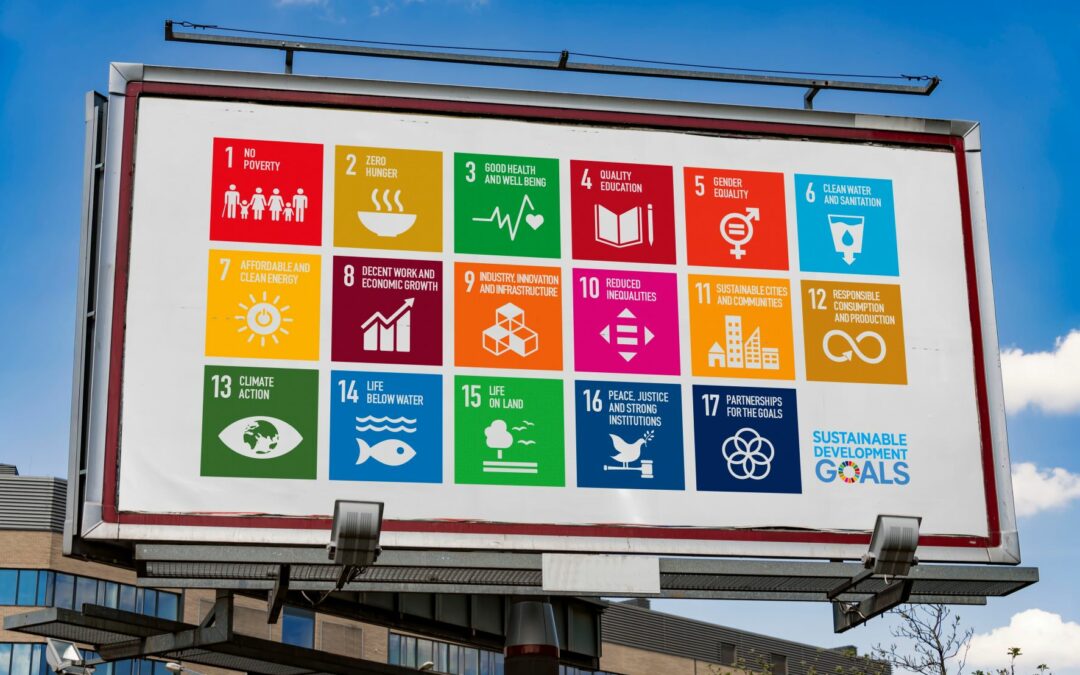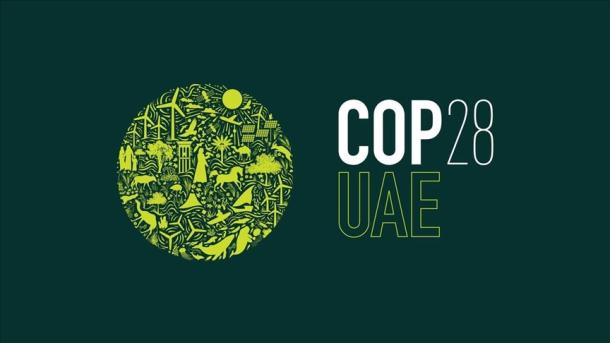Polycrisis: Probable; Remedies: Possible
A wide variety of organizations and individuals have recently warned of multiple global crises. Some have used the term “polycrisis,” defined by the Cascade Institute as “multiple global systems…causally entangled in ways that significantly degrade humanity’s prospects.” Others use the term in passing, suggest that it is only “potential” (4:2), or cite multiple threats and risks without any overarching label (4:1). Ample evidence suggests that the “polycrisis” term is warranted and probable, if not clearly certain, but other descriptions should not be ignored, e.g. “multiple shocks” (4:3), multiple crises (4:7), and “global security challenges” (4:10). Even more important are the multiple remedies from multiple sources, notably a “tripling in spending” on the energy transition (4:4), reconsidering the global demand for land (4:5), fighting against disinformation (4:6), greater attention to making progress on the Sustainable Development Goals (4:7, 4:8, 4:9) and the role of technology and industry leaders in meeting the SDGs (4:10). All are possible, but, unfortunately, not probable. “Worldwide collaboration to forge a safe way forward” (4:1) is needed, but no simple matter to attain.
RRR 4:1 Global Catastrophic Risks 2022: A Year of Colliding Consequences
(Stockholm: Global Challenges Foundation, Nov 2022, 77p)
“The year 2022 has seen the global threats facing humanity grow and intensify, interlinking and reinforcing one another with far reaching consequences for our future. The current risk landscape illustrates more than ever the need for worldwide collaboration to forge a safe way forward.” Sections discuss weapons of mass destruction, pandemics, climate catastrophe and tipping points, ecological collapse, AI, asteroids, supervolcanic eruption, and global population.
Dominating consciousness in 2022 has been Russia’s invasion of Ukraine. The Russia vs. US/NATO
conflict threatens to upend the fragile nuclear order. Recent changes in doctrines and new nuclear weapons make it more likely than ever that such weapons will be used in military action or by accident. Norms of restraint are “now unravelling at an alarming rate,” at the same time that emissions worldwide continue to rise and the window of opportunity to halt catastrophic climate change narrows.
“Globally, the green agenda continues to be shelved and deprioritized in response to other crises.” A future governed by catastrophic climate change is starting to feel inevitable without immediate action by the world community. “As climate breakdown accelerates, so too does the risk of future deadly pandemics.” [ALSO SEE: The “Doomsday Clock” of The Bulletin of the Atomic Scientists (Jan 2023), advanced to 90 seconds before midnight—the closest to midnight ever since this assessment was begun in 1947.]
RRR 4:2 The Global Risks Report 2023
(Davos: World Economic Forum, Jan 2023, 93p)
The 18th edition summarizes “Today’s Crisis” (cost-of-living, economic downturn, economic warfare, climate action hiatus, societal polarization) and “Tomorrow’s Catastrophes” (natural ecosystems past the point of no return, “perma-pandemics and chronic capacity challenges,” new weapons and conflicts threatening human security, privacy in peril, global debt distress), and concludes with four “potential polycrisis” scenarios for 2030 involving natural resources (food, water, metals, minerals), climate, and cooperation. The Report is underpinned by the Executive Opinion Survey (EOS), on severe threats over the next two years in 121 economies identified by >12,000 business leaders, and by the Global Risks Perceptions Survey (GRPS), with insights from >1,200 experts “across academia, business, government, the international community, and civil society.”
The GRPS ranks 32 Global Risks by Severity (p11) over a 2-year and 10-year period. The Top 10 Short-term risks: Cost-of-living crisis, Natural disasters and extreme weather events, Geoeconomic confrontation, Failure to mitigate climate change (#1 in the Long Term), Societal polarization and erosion of social cohesion, Large-scale environmental damage incidents, Failure of climate change adaptation, Widespread cybercrime and cyber insecurity, and Large-scale involuntary migration. Some other risks: Debt crises (#11), Interstate conflict (#14), Disinformation (#16), Biodiversity loss (#18), Infectious diseases (#20), Terrorist attacks (#30), and Adverse outcomes of frontier technologies (#32, rising to #18 in ten years). An “interconnections map” of the Global Risks Landscape is provided on p10. Concludes that “as volatility in multiple domains grows in parallel, the risk of polycrises accelerates” (p9), and that “Some of the risks described in this year’s report are close to a tipping point” (p10).
RRR 4:3 World Economic Situation and Prospects 2023
(UN Dept of Economic and Social Affairs, Feb 2023, 178p).
On “multiple shocks to the world economy” in 2022, the climate crisis continuing its heavy toll, a “sharp downturn” in most developed economies, a “worsening outlook” in most developing regions, mounting debt and balance of payment vulnerabilities, the imperative of avoiding fiscal austerity, fiscal policy for Sustainable Development Goals progress, the imperative of stronger international cooperation, and regional developments and outlook. In the Foreword, Secretary-General Guterres warns that “billions of people are suffering…unprecedented times demand unprecedented action, including a transformative SDG stimulus package.” [ALSO SEE: Crisis Upon Crisis: IMF Annual Report (International Monetary Fund, Oct 2022, 80p).]
RRR 4:4 World Energy Outlook 2022
(Paris: International Energy Agency, Oct 2022, 524p)
The IEA flagship report, with an updated “Roadmap to Net Zero Emissions by 2050” and outlooks for energy demand, electricity, liquid fuels, gaseous fuels, and solid fuels. “Today, the world is in the midst of the first truly global energy crisis, with impacts that will be felt for years to come.” The crisis is affecting all countries, especially those that can least afford it. Some sectors are poised for a faster transformation, but there is still “a large gap between today’s ambitions and a 1.5oC climate stabilization.” The world has not been investing enough in energy. A smooth transition will require “a tripling in spending on clean energy and infrastructure to 2030.”
RRR 4:5 The Land Gap Report
(landgap.org, Nov 2022, 99p)
Authors from the University of Melbourne, Lund University, and other organizations write that over-reliance of governments on land-based carbon removals “could push ecosystems, land rights, and food security to the brink with new land area equivalent to 50% of the world’s croplands currently being required to meet targets.” Chapters discuss the global demand for land, forest ecosystem protection and restoration, land rights of indigenous peoples and local communities, the perils of business-as-usual in agriculture and biodiversity conservation, and agroecology for socioecological resilience and human rights.
RRR 4:6 The Impacts of Climate Disinformation on Public Perception
(Climate Action Against Disinformation and Conscious Advertising Network, Nov 2022, 72p)
CAAD is a global coalition of 50 organizations “seeking to minimize climate mis/disinformation in public life.” Together with the non-profit CAN, a unique survey was commissioned with respondents in Australia, Brazil, India, Germany, the UK and the US. Key findings: 1) between 6 and 23% of the populations in the six countries do not believe in a changing climate, or are uncertain about whether a change is happening; 2) a further 22-38% believe that humans are only partly responsible for climate change (people in the US are most likely to hold this belief); 3) fossil gas is seen as a climate-friendly energy source by 57% in India, 40% in Brazil, 39% in the US, but only 14% in the UK; 4) one quarter or more pf those surveyed in each country believes that their country “cannot afford to reach the target of net zero emissions by 2050.”
RRR 4:7 Europe Sustainable Development Report 2022
(Sustainable Development Solutions Network and SDSN Europe, Feb 2023, 186p)
Warns of the SDGs and Europe in a world of multiple crises. In the midst of multiple health, security, climate, and financial crises, the SDGs remain the future Europe and the world want. These crises represent major setbacks for the SDGs and human development globally.” Part 1 assesses the performance of the EU countries against the SDGs, with country profiles; Part 2 lists priorities to restore and accelerate SDG progress in Europe and globally; Part 3 offers “10 ideas to strengthen the EU’s SDG leadership.”
RRR 4:8 17 Rooms: Rejuvenating the Sustainable Development Goals Through Shared Action
(Brookings Center for Sustainable Development and The Rockefeller Foundation, Dec 2022, 28p)
The 17 Rooms initiative, begun in 2018, uses unique approaches to help groups unlock and accelerate diverse paths to progress. The 17 highly curated groups, one per SDG, craft next-step actions on priorities, e.g. (for the first 8 Rooms/Goals): Room 1: bridge poverty measurement and anti-poverty policymaking; Room 2: promote insect-based food and feed across Africa; Room 3: prioritize approaches to foster mentally healthy cities; Room 4: reimagine the roles of schools and communities, e.g. an “Education for the Planet” learning hub; Room 5: advance gender-equitable care for children and elders; Room 6: unlock water innovation investments to increase water awareness; Room 7: accelerate just energy transitions in developing countries that are “net people positive”; Room 8: identify best practices for retaining and promoting entry-level workers.
Experience from this initiative “has surfaced three important ingredients for driving new forms of SDG progress”: 1) people need to be able to take the SDGs into their own hands—across every level and scale of community; 2) difficult social problems require diverse mixes of people, perspectives, and assets coming together to drive shared action; 3) “leaders and organizations need places to connect across professional and geographical boundaries to broaden outlooks, spark new approaches to action, and pursue broader impact; specialists working on each SDG can learn a great deal from peers working on other SDGs.”
RRR 4:9 SDG 16 Data Initiative Report 2022
(SDG 16 Data Initiative, Nov 2022, 94p)
The Data Initiative is a consortium of 17 organizations that use non-official data to track progress towards SDG 16 on Peace, Justice, and Strong Institutions, in that official UN data “have important limitations.” This 6th annual report is a resource for governments, UN officials, and civil society “for measuring and making progress on SDG 16 targets.” Chapter 1, by the Transparency, Accountability, and Participation Network, highlights interlinkages between SDG targets and indicators to create synergies, and “the persistent challenge of ‘siloed efforts’ for the overall 2030 Agenda,” which can “limit possibilities for raising global awareness of and mobilizing support for sustainable development.” Chapter 2, by the Global Forum for Media Development and the Centre for Law and Democracy, presents data related to SDG Target 16.10 on public access to information and fundamental freedoms. Chapter 3, by the World Justice Project, focuses on SDG 16.3 aimed at strengthening the rule of law and equal access to justice. Chapter 4, by the International Institute for Democracy and Electoral Assistance, overviews indicators on the global state of democracy. Chapter 5, by the Small Arms Survey, focuses on Target 16.1, the ongoing challenges to reducing multiple forms of violence. “Overall, the international community faces very strong headwinds for meeting many of the 12 targets and 24 indicators that the UN has specified for SDG 16…especially in countries experiencing democratic erosion, protracted conflict and armed violence, and unequal development.” [Italics added]
RRR 4:10 Technology for a Secure, Sustainable and Superior Future: Technology as a Force for Good
(Force for Good, Feb 2023, 91p)
Chaired by WAAS Fellow Ketan Patel, the report describes “a world torn by the security and sustainability transition,” near-term global security challenges, the “cost-taking priority” of global security, costs of achieving the SDGs “rising dramatically,” technology as key to meeting the SDGs, why “Human Security goals and the SDGs are intertwined,” industry leaders engaging across multiple fronts, adoption of ESG policies and net-zero commitments by tech sector leaders, and a list of 100 tech industry leaders.
# # # # #
Prior Report on Recent Reports Issues:




0 Comments